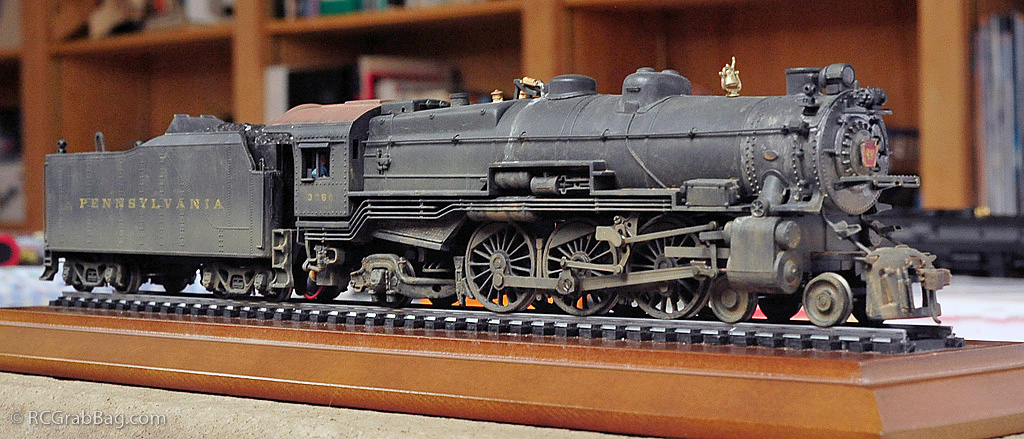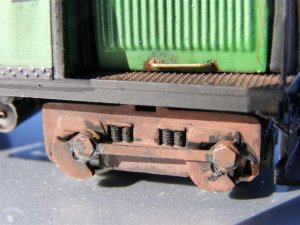PRR used anthracite coal which left their enginges a little brown, not that deep gray like N&W, which used semibituminus coal. For your grease splatters use some gloss colors like dark gray metallic, brown etc.
I have developed a procedure to paint ALL my brass steam.
Start with loco as right out of the paint shop and still glossy. I then do all the rust/calcium wet stuff. I start with just clear thinner painted down the path of dripping water. Next dab in the rust, oranges, browns etc. Let dry. For the traction sand dust and coal soot, I use a 6 foot long piece of 2X4 with track layed on the thin edge. Against the wall in my paint area I have a cheap door mirror so I can see both sides of the loco. I put 3 in 1 oil on the rails and then put the engine on the track. Using DCC or DC throttle I start the loco moving slowly forward, and lightly spray the wheels and lower part of the tender. I use Testors Armor Sand thinned with a lot of lacquer thinner so it will dry very fast and it produces very small droplets. When side 1 is done I rotate the loco and repeat. The mirror allows you to get both sides almost exactly the same. I spray in the direction the wind woulds travel over the loco as it went down the track. Next the coal soot. I use Testors flat black with a little armor sand added, and thinned with lacquer thinner. Spray from about 14 inches from teh top front of the engine, over teh smoke stack. point the brush toward the cab and at about a 45 degree angle as you advance over the top of the engine. You want the soot to look like it fell back onto the moving engine, so the area right in back of the cab should have little soot, but right over the smokebox and the tender deck should have a fair amount of soot. If your steam loco is a freight loco or a switcher, it will have much more soot on the boiler from sitting or working at slow speeds.




